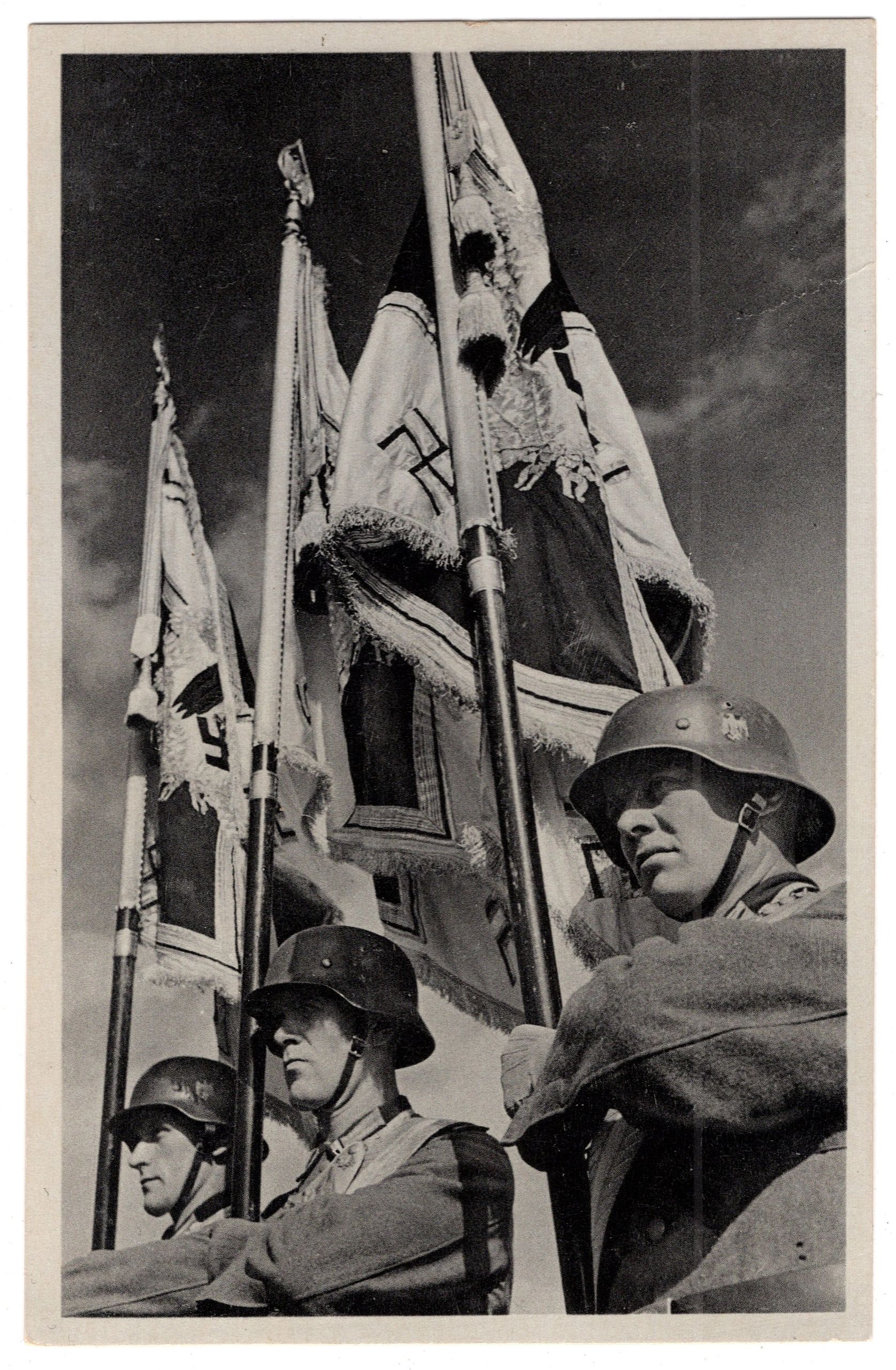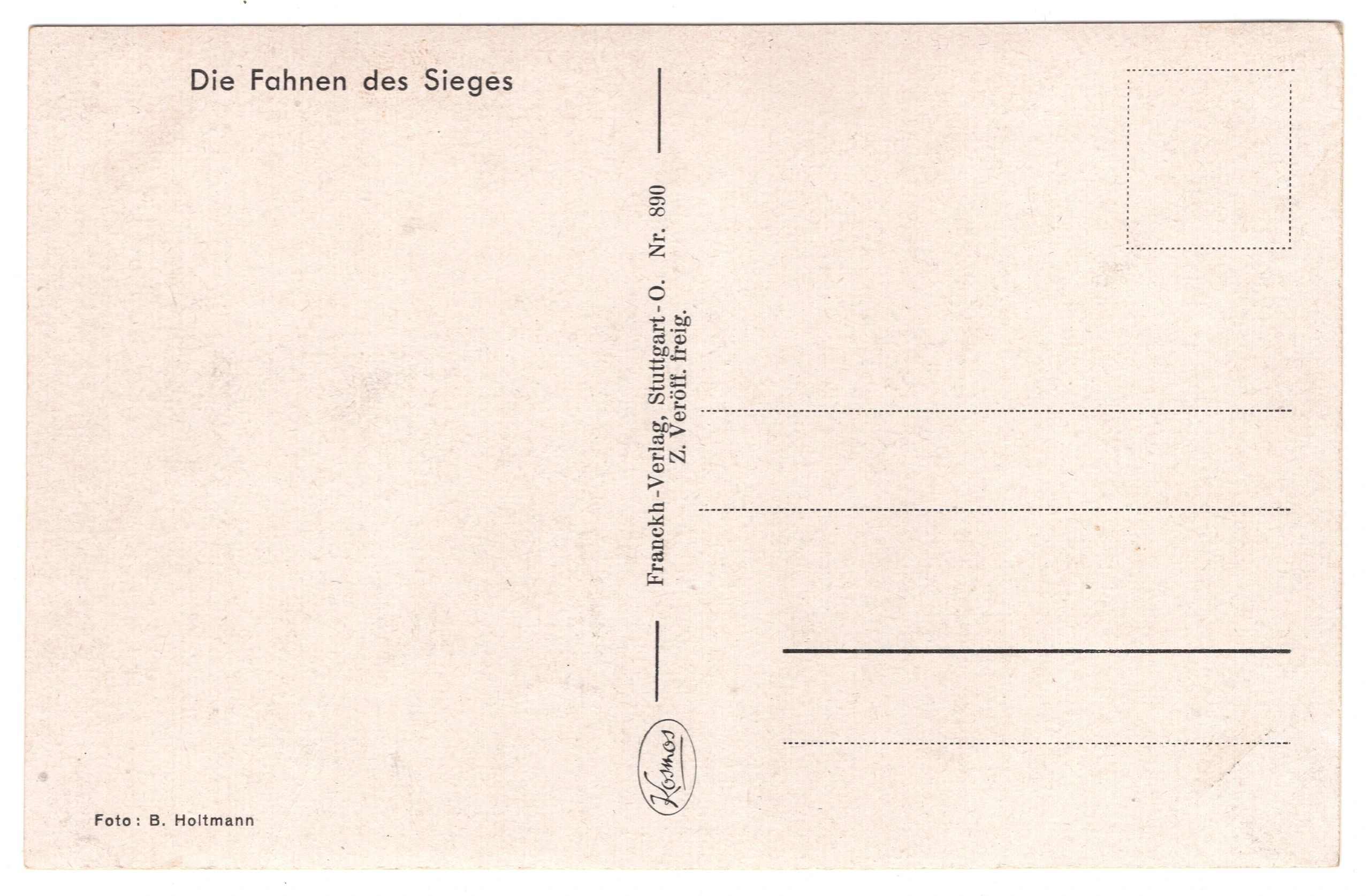Description
Here is your chance to own a nice postcard of Heer standard bearers. Unused with zero writing or postage stamp on the reverse. Nice photo on the front. In excellent condition overall. The Heer was the land forces component of the Wehrmacht, the regular German Armed Forces, from 1935 until it ceased to exist in 1945 and then formally dissolved in August 1946. During World War II, a total of about 13.6 million soldiers served in the German Army. Germany’s army personnel were made up of volunteers and conscripts. Only 17 months after Adolf Hitler announced publicly the German rearmament program, the Army reached its projected goal of 36 divisions. During the autumn of 1937, two more corps were formed. In 1938 four additional corps were formed with the inclusion of the five divisions of the Austrian Army after the Anschluss in March. During the period of its expansion under Hitler, the German Army continued to develop concepts pioneered during World War I, combining ground (Army) and air (Luftwaffe) assets into combined arms forces. The German military managed quick victories in the two initial years of World War II, a new style of warfare described as Blitzkrieg for its speed and destructive power. The German Empire consisted of 26 states, most of them ruled by royal families. They included four kingdoms, six grand duchies, five duchies (six before 1876), seven principalities, three free Hanseatic cities, and one imperial territory. Although Prussia was one of few kingdoms in the realm, it contained about two thirds of Germany’s population and territory. Prussian dominance had also been established constitutionally. During its 47 years of existence, the German Empire was an industrial, technological, and scientific giant, gaining more Nobel Prizes in science than any other country. By 1900, Germany was the largest economy in Europe, surpassing the United Kingdom, as well as the second-largest in the world, behind only the United States. Late in Bismarck’s chancellorship and in spite of his personal opposition, Germany became involved in colonialism. Claiming much of the leftover territory that was yet unclaimed in the scramble for Africa, it managed to build the third largest colonial empire at the time, after the British and the French empires. Germany became a great power, boasting a rapidly developing rail network, the world’s strongest army, and a fast-growing industrial base. In less than a decade, its navy became second only to Britain’s Royal Navy. In 1879, the German Empire consolidated the Dual Alliance with Austria-Hungary, followed by the Triple Alliance with Italy in 1882. It also retained strong diplomatic ties to the Ottoman Empire. When World War 1 arrived, Italy left the alliance and the Ottoman Empire formally allied with Germany. In the First World War, German plans to capture Paris quickly in the autumn of 1914 failed. The war on the Western Front became a stalemate. However, Imperial Germany had success on the Eastern Front. The German declaration of unrestricted submarine warfare in early 1917 contributed to bringing the United States into the war. The high command under Paul von Hindenburg and Erich Ludendorff increasingly controlled the country, but in October after the failed offensive in spring 1918, the German armies were in retreat, allies Austria-Hungary and the Ottoman Empire had collapsed, and Bulgaria had surrendered. The Empire collapsed in the November 1918 Revolution with the removal of its monarchs. This left Germany with the Weimar Republic, and a devastated and unsatisfied populace, faced with postwar reparation costs of nearly 270 billion dollars, all in all leading to the rise of Adolf Hitler and Nazism. Free shipping ANYWHERE IN THE WORLD & I don’t charge PayPal fees like some of the other guys!








